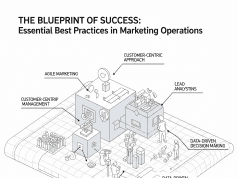In today’s digital landscape, marketing technology (martech) is pivotal for driving successful campaigns and enhancing customer experiences. Creating an effective martech stack can be a game-changer for businesses wanting to streamline efforts, optimize customer engagement, and ultimately boost ROI. Here’s a guide to building your martech stack with essential tools that can elevate your marketing strategies.
Understanding the Martech Stack
A martech stack is a combination of tools and technologies that marketers use to plan, execute, and measure their marketing strategies. It comprises various software and applications that help streamline efforts across multiple channels—be it email, social media, or analytics.
Benefits of a Well-Structured Martech Stack
- Improved Efficiency: Automation tools reduce manual work, allowing teams to focus on strategy and creativity.
- Enhanced Personalization: With data collection and analysis tools, marketers can tailor experiences for individual customers.
- Data-Driven Decisions: A comprehensive stack allows for better measurement, improving the ability to iterate on strategies and tactics.
- Seamless Integration: A well-built martech stack ensures that tools work well together, reducing friction and enhancing collaboration.
Essential Categories of Martech Tools
1. Customer Relationship Management (CRM)
A solid CRM platform is foundational for managing customer interactions and data throughout the customer lifecycle. It helps streamline processes, centralizes customer data, and enhances communication strategies. Popular options include Salesforce, HubSpot, and Microsoft Dynamics.
2. Email Marketing Platforms
Email marketing remains a powerful channel for engaging customers. Tools like Mailchimp, SendGrid, and ActiveCampaign allow you to design and automate campaigns, segment lists, and analyze performance metrics.
3. Content Management Systems (CMS)
Your website is often the first touchpoint for customers. A user-friendly CMS like WordPress or Drupal helps manage content easily and optimize for SEO, ensuring your digital presence is engaging and visible.
4. Social Media Management Tools
To effectively manage and analyze social media efforts, tools like Hootsuite, Buffer, or Sprout Social allow for scheduling, monitoring engagement, and analyzing metrics across various platforms.
5. Analytics and Data Visualization Tools
Understanding customer behavior and campaign performance is crucial. Google Analytics, Tableau, and Looker provide valuable insights, helping marketers make informed decisions and refine strategies.
6. Marketing Automation Platforms
Marketing automation tools such as Marketo, Pardot, and Eloqua help streamline repetitive tasks like lead nurturing, email campaigns, and data management, boosting efficiency and promoting a personalized customer journey.
7. Lead Generation Tools
To attract and capture leads, tools like OptinMonster or Leadpages can be effective in creating landing pages and optimizing conversion rates.
8. Search Engine Optimization (SEO) Tools
SEO tools like SEMrush, Moz, or Ahrefs are vital for optimizing content and improving organic search visibility. They help with keyword research, site audits, and competitive analysis.
9. Customer Experience Platforms (CXP)
Customer experience tools, such as Qualtrics or Medallia, gather feedback to improve interactions, enabling businesses to tailor their offerings based on real customer insights.
10. Collaboration Tools
Effective communication within your marketing team is essential. Tools like Slack, Trello, or Asana help streamline workflows, enhance collaboration, and ensure everyone is on the same page.
Tips for Building Your Martech Stack
- Assess Your Needs: Identify specific pain points in your current marketing efforts to determine which tools can address these challenges.
- Integration is Key: Opt for tools that offer integration capabilities to ensure seamless data transfer between systems.
- Start Small and Scale Up: Begin with essential tools, and expand your stack as your needs evolve. This approach minimizes costs and complexity initially.
- Invest in Training: Ensure your team is well-trained in the tools you choose to maximize their potential.
- Regularly Evaluate Tools: Persistent evaluation helps in filtering out underperforming tools and optimizing your stack for the best performance.
Conclusion
Building a comprehensive martech stack is crucial for businesses looking to thrive in a highly competitive landscape. By investing in the right tools tailored to your unique needs, you can enhance efficiency, improve customer interactions, and drive marketing success. Focus on creating a cohesive environment where data and strategy align, and watch your marketing efforts yield better results.









